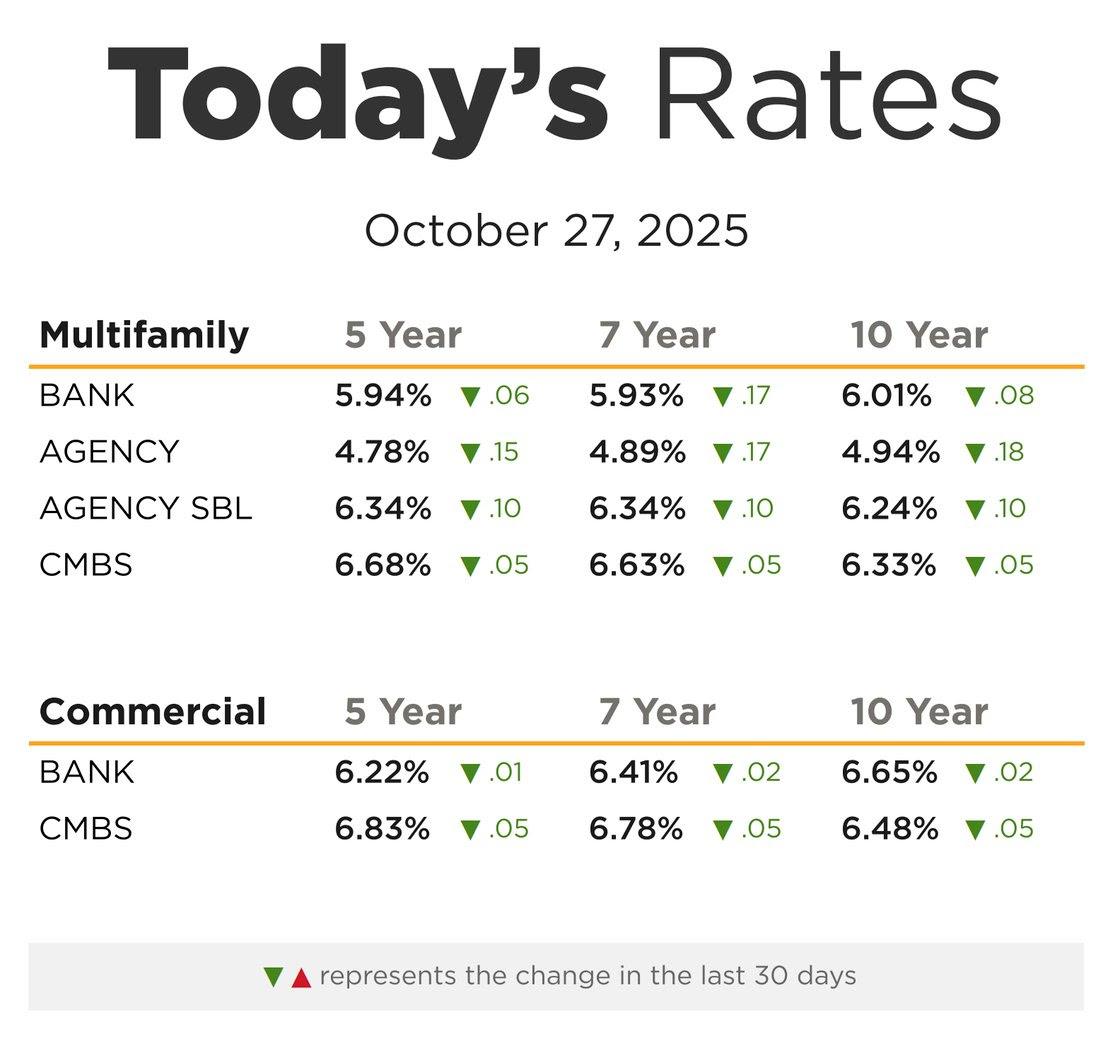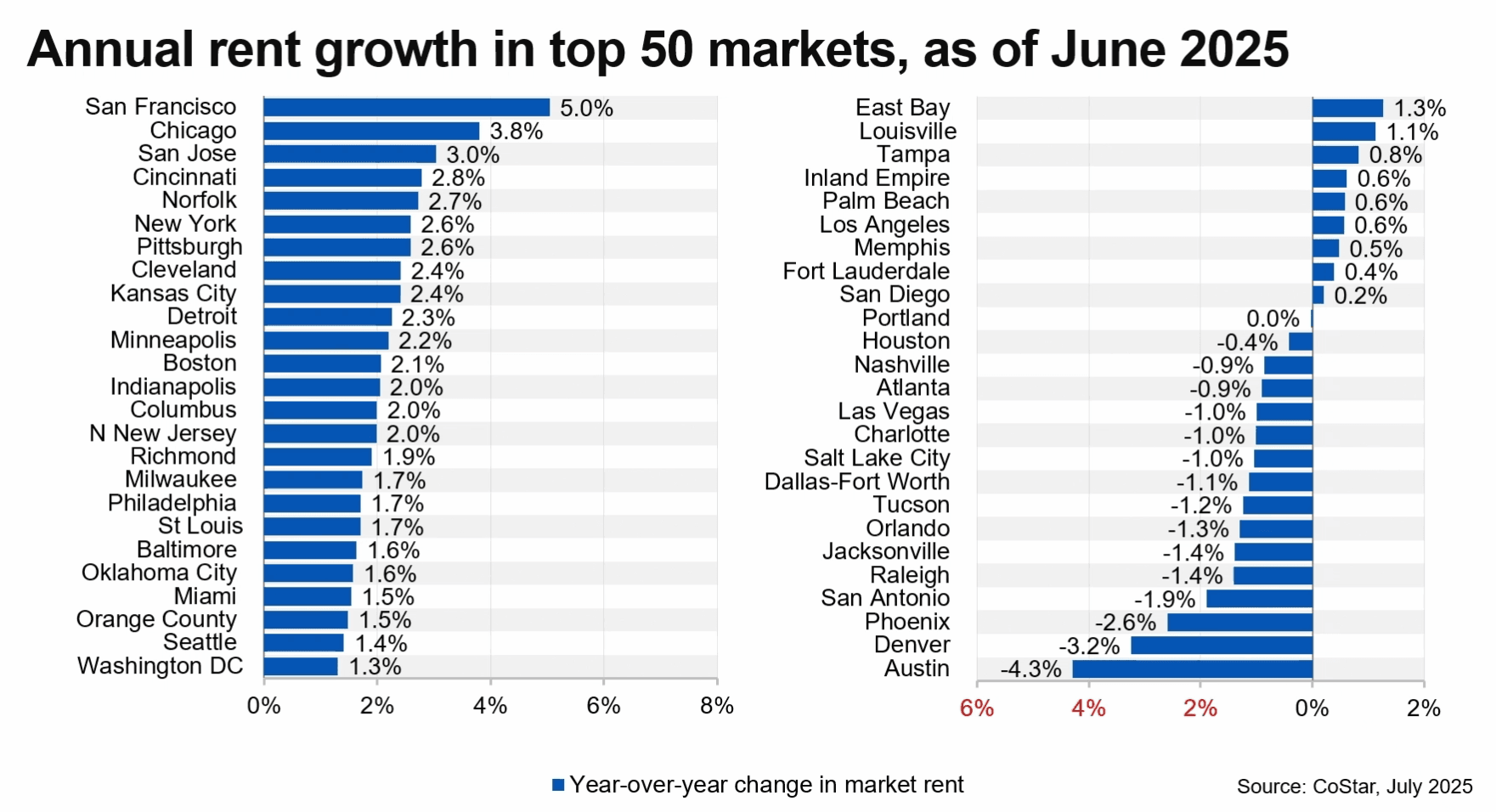Dive Brief:
- Data is backing up what many multifamily buyers and sellers already know —cap rates are rising in apartments around the country.
- A new report from CBRE says that going-in cap rates rose 33 basis points to 4.09% in the third quarter. In the second quarter, they jumped 39 bps (their biggest increase in a quarter ever) — marking a 72 bps increase over six months. Still, they are below their fourth-quarter 2019 level of 4.16%.
- Exit cap rates, or the rate used to estimate a property’s value at the end of the holding period, increased 21 bps in the third quarter versus 30 in the second quarter. However, the current 4.63% exit cap rate sits below pre-pandemic levels. Internal rate of return targets passed the pre-pandemic average, rising 35 basis points to 6.39%.
Dive Insight:
Investors are also becoming more pessimistic about rent growth as demand slows. They underwrote 3.6% annual rent growth over the next three years, compared to a 4.3% forecast in the first quarter. From 2014 to 2019, they underwrote 3.1% rent growth on average, according to CBRE.
This more tepid environment could attract buyers who are conservative when projecting rent growth.
“We’ve said, ‘If a deal doesn’t work with 3% rent growth, we’re not buying,’” said Stuart Zook, chief investment officer for Coconut Grove, Florida-based Monument Capital Management. “We’re not assuming that we’re going to get 5% on renewals. If we can, great.”
While gateway markets suffered during the pandemic, CBRE says investors are now optimistic about rent growth in those metros. Six months ago, anticipated gateway rent growth sat below other markets.
In Dallas, Philadelphia, and New York City, going-in cap rates were flat. In all other markets, they rose. In gateway markets, cap rates have only increased 58 basis points in six months — below the 82 average for other metros.
With this uncertain market, Matt Vance, America’s head of multifamily research for CBRE, commented in the report that apartment investors are being selective. “While a bid/ask price gap exists for many assets, transactions are continuing to close,” he said. “This reflects buyers’ long-term confidence and sellers’ willingness to lower pricing modestly in light of the significant embedded gains in assets purchased over the past several years.”
But that isn’t universal. Some observers have seen transactions fall because buyers and sellers still haven’t totally come together on pricing.
“Price discovery is taking place right now,” Manus Clancy, senior managing director of applied data, research, and pricing for data and analytics firm Trepp, told Multifamily Dive. “People are trying to figure out where the market is.”
In some markets, underwriting apartment deals are more complicated than in others.
“In the Seattle region, it has been difficult for us to make it work from an underwriting standpoint,” Derek Graham, president, and principal of Hermosa Beach, California-based Odyssey Properties Group, told Multifamily Dive in August. “And it’s largely because the pricing hasn’t shifted very much — the same as in all these other markets. Sellers are resistant to adjusting their pricing and I don’t blame them.”
Source: Cap rates jump 72 basis points in 6 months
Receive Market Insights
Periodic analysis on rents, pricing, cap rates, and transaction activity across Chicago and key suburban markets.



